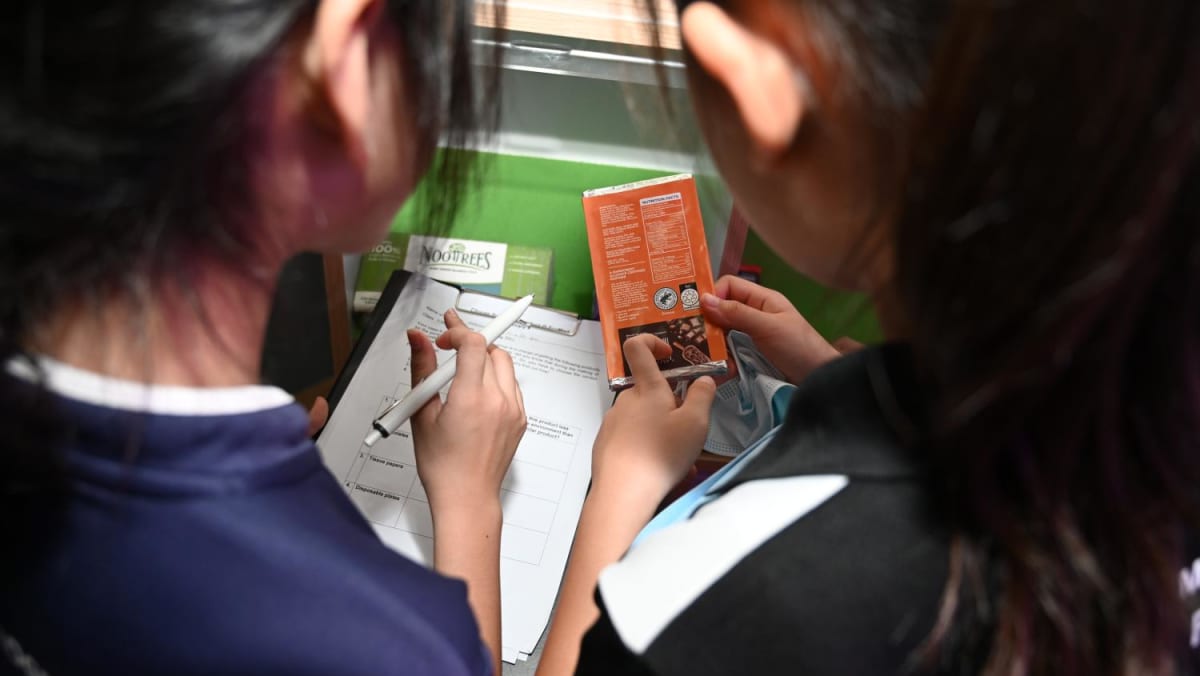
LEARNING ABOUT FOOD SUSTAINABILITY
On a visit to Si Ling Primary in February, CNA watched as their science teacher Mr Ashri Shukri started the lesson by asking the students if they often shop for groceries with their parents. Most of them indicated that they did.
“Can the choice you make at the supermarket impact the environment?” he asked them. The students responded with a loud, resounding yes.
The class was then tasked with organising a hypothetical picnic. The students were to find and “purchase” tuna, chocolates, tissue paper and disposable plates for the event. But there was a catch – they had to choose the most environmentally friendly option for each item.
Split up into groups of three or four, the students were handed tablets to watch videos about topics such as plastic pollution, and read up on the different well-recognised labels that indicate environmental sustainability.
For example, a dolphin-safe label indicates that the company catches its tuna using methods that do not harm dolphins and protect the marine ecosystem. A Forest Stewardship Council (FSC) certification ensures that wood products like paper towels come from responsibly managed forests.
A Certified Sustainable Seafood label from the Marine Stewardship Council means that the seafood has been caught in a way that ensures sustainable fish supply in waters now and in the future.
The students were left to their own devices as they made their way around the EcoMart, stopping to read the instructions on the walls and fill up their worksheets while having hearty discussions with their teammates.
This approach encourages students to conduct research and find the information themselves, Mr Ashri told CNA in an interview after the lesson concluded.
“At the end of the day, we want to make learning about sustainability come to life for students, because if we provide opportunities for students to practise responsible decision-making and informed decision-making, it makes it more interesting,” he added.
Different levels also learn about different aspects of food sustainability. For example, the primary 6 students learn about how the distance travelled by food products contributes to climate change, said Mr Ashri, adding that their task includes comparing the country of origin of the products and calculating the distances they had travelled before deciding which ones to buy.
Giving students a chance to apply their knowledge or use the information in a new situation allows for deeper learning and they can make meaningful connections, he said.

